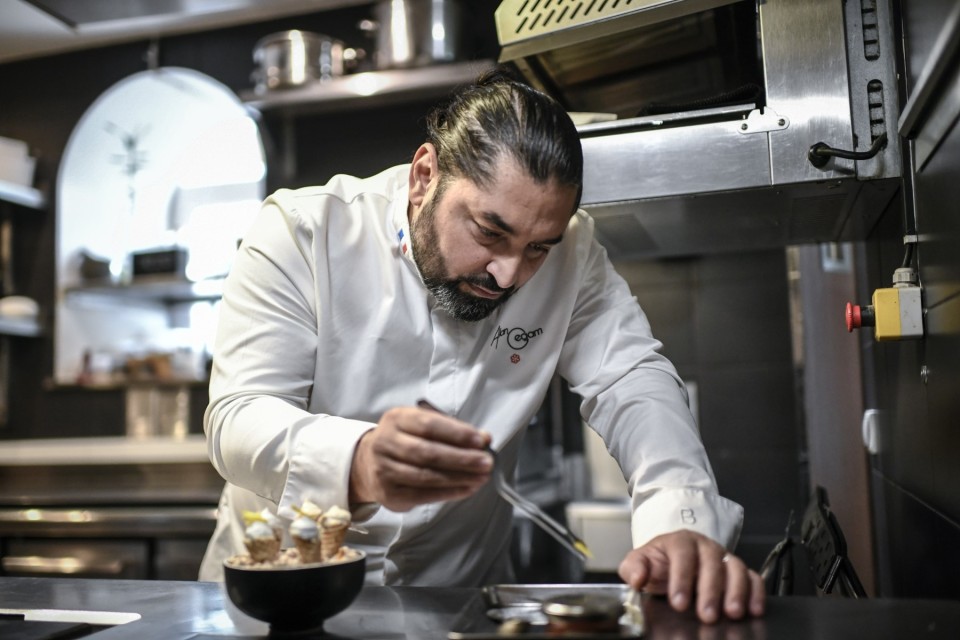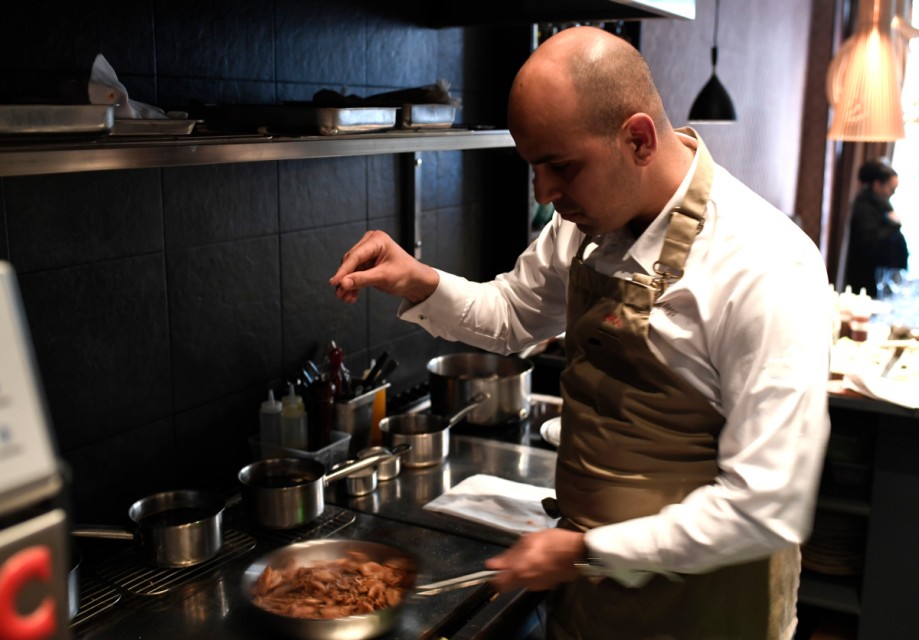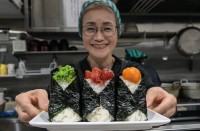
By Olga NEDBAEVA
Agence France-Presse
PARIS, France (AFP) — “My mum doesn’t agree with what I do here: at home, we don’t eat like this,” laughs Alan Geaam, the first Lebanese chef to earn a Michelin star in Paris.
The self-taught chef, who fled his country’s civil war in 1999, nonetheless believes that promoting Lebanon’s culinary riches means combining them with some of “the elegance and refinement” of French cuisine.
At his self-titled restaurant in the well-heeled 16th district of Paris, the tabbouleh comes in three different textures, there are trompe-l’oeil peanuts made from foie gras, and super-light baklava with seasonal fruits.
“You don’t get a Michelin star with traditional Lebanese cuisine,” said Geaam, who earned his in 2018.
“Tabbouleh has been made for a thousand years, no one has touched it. Today, this cuisine needs rejuvenating,” he told AFP.
The traditionally closed and snobbish world of French gourmet food has been slowly prised open to foreign influences in recent decades.
But cooks like Geaam show how the influences cut both ways in fine-dining establishments, with foreigners putting French twists on their native recipes.
Enrique Casarrubias’s friends thought he was crazy when he opened a high-end Mexican restaurant, Oxte, in Paris in 2018.
Could a butcher’s son, who started out cooking street food to sell in the market of his village, really crack the world of Parisian haute cuisine?

– ‘Taste of childhood’ –
By finding complex new ways to recreate the memories of his youth, he pulled it off.
He has reworked Mexico’s famous mole sauce of chocolate and chillies with beetroot, carrots and French herbs.
The street snack of fresh fruit with lemon, salt and spice — which he ate every day on his way home from school — is reimagined as a luxurious dessert with avocado and a kick of mezcal.
“Mexicans come into the restaurant and say they don’t recognize any of it, but then they taste it and have tears in their eyes because it reminds them of their childhood,” Casarrubias told AFP.
It was a similar approach for Raphael Rego, who earned a Michelin star for Oka by combining Brazilian and French ideas — such as the moqueca fish stew with elements of the Marseille’s bouillabaisse soup.
“At the beginning,” he admits, “Brazilians did not understand. Today, the star gives me the necessary visibility.”
Others have been introducing homespun influences more gradually.
Philip Chronopoulos was already a starred culinary artist at the Palais Royale Restaurant when the Covid-19 pandemic forced a pause on the industry, and gave him time to think up ways of bringing touches from his native Greece to his menu.
There is now feta ice cream, tarama made from fois gras and spanakopita (a herb and feta pie) seasoned with the yellow wine of France’s Jura region.
It earned him a second Michelin star last year.
“I would like my plates to become even more Greek,” he told AFP, though he admits it can be tricky to find suitable elements from Greece’s “sunny cuisine”, especially during the long Parisian winter.
© Agence France-Presse







